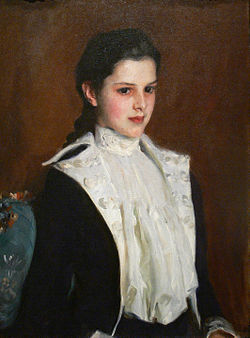History of Interlingua
Interlingua is a constructed language using words that are found in most West-European languages. It was made by IALA - a group of people (the most known was Alexander Gode) who worked on it for more than 20 years, and they finished and published the first dictionary in 1951. Interlingua was created on the base of languages: English, French, Spanish, Portuguese, and Italian.
At the beginning of the 20th century, several associations such as the International Research Council, the American Council on Education and the American Council of Learned Societies were investigating the problem of the international auxiliary language.
Alice Vanderbilt Morris and her husband, Dave Hennen Morris had become interested in linguistics and the international auxiliary language movement in the early 1920s. In 1924 they created the non-profit International Auxiliary Language Association (IALA) in New York City. They wanted to give scientific support to the study of IALs. They asked for the help of linguists like Edward Sapir, William Edward Collinson, and Otto Jespersen.[1]
In its early years, IALA was focused on three tasks:
- finding other organizations around the world with similar goals;
- building a library of books about languages and interlinguistics;
- comparing IALs such as Esperanto, Ido, Novial, and Interlingue.
To achieve the last goal, it arranged conferences with people that supported those IALs. These people introduced their languages and debated about them. IALA gain the support of different linguists during these conferences and congresses.[2] In 1937, 24 linguists from 19 universities published Some Criteria for an International Language and Commentary. However, the beginning of World War II in 1939 meant the end of those meetings.[2]
Although the IALA did not have the goal of creating its own language, after ten years of research, it concluded that none of the existing artificial languages was good enough. By 1937, the members had made the decision to create a new language.
At that time, supporters of international auxiliary languages were divided in two gropus:
- those that supported "naturalistic" languages such as Occidental and Novial;
- those that supported "systematic" languages such as Esperanto and Ido.
During the war, those who supported a naturalistic auxiliary language won the debate and IALA assumed the position that a naturalistic language would be best.[2]
E. Clark Stillman with the help of Alexander Gode, developed a technique for selecting and standardizing vocabulary based on a comparison of control languages.[2] Later, in 1943 Stillman left and Gode became Acting Director of Research.[3] IALA began to develop models of the proposed language, the first of which were presented in Morris's General Report in 1945.[4]
In 1946, with the French linguist André Martinet was Director of Research, four models for the language were introduced:[2]
| Model P | very naturalistic, with word forms unchanged from the prototypes | ||
| Model M | moderately naturalistic, similar to Occidental | ||
| Model C | a bit schematic, along the lines of Novial | ||
| Model K | moderately schematic, similar to Ido (less schematic than Esperanto)[4] |
After a survey about those four models, the two more schematic models were rejected and, of the two naturalistic models, M received more support than P. IALA decided to find a middle way between P and M, with some elements of C.[5]
Martinet left the project in 1948, and Gode was in charge of the last phase of Interlingua's development. His task was to combine elements of Model M and Model P; correct the errors pointed out by the surveys with elements of Model C; and develop a vocabulary.
The vocabulary and verb conjugations of Interlingua were first presented in 1951, when IALA published the finalized Interlingua Grammar and the 27,000-word Interlingua–English Dictionary (IED). In 1954, IALA published an introductory manual entitled Interlingua a Prime Vista ("Interlingua at First Sight").
History Of Interlingua Media
Reading out loud of the 'Vocabulario scientific international' article from the Interlingua Wikipedia.
References
- ↑ Falk, Julia S. (1995). "Words without grammar: Linguists and the international language movement in the United States". Language and Communication. Pergamon. 15 (3): 241–259. doi:10.1016/0271-5309(95)00010-N.
- ↑ 2.0 2.1 2.2 2.3 2.4 Gopsill, F. P. (1990). International languages: a matter for Interlingua. Sheffield, England: British Interlingua Society. ISBN 0-9511695-6-4. OCLC 27813762.
- ↑ Bray, Mary Connell (1971) [1951]. "Foreword". Interlingua-English: A dictionary of the international Language (2nd ed.). New York: Frederick Ungar Publishing Company. ISBN 0-8044-0188-8. OCLC 162319. Archived from the original on October 6, 2007. Retrieved April 18, 2010.
- ↑ 4.0 4.1 Gopsill, F. P., and Sexton, Brian, "Profunde recerca duce a un lingua" Archived 2022-12-10 at the Wayback Machine, Historia de interlingua, 2001, revised 2006.
- ↑ Gopsill, F. P., and Sexton, Brian, "Le natura, si – un schema, no" Archived 2022-04-12 at the Wayback Machine, Historia de interlingua, 2001, revised 2006.



